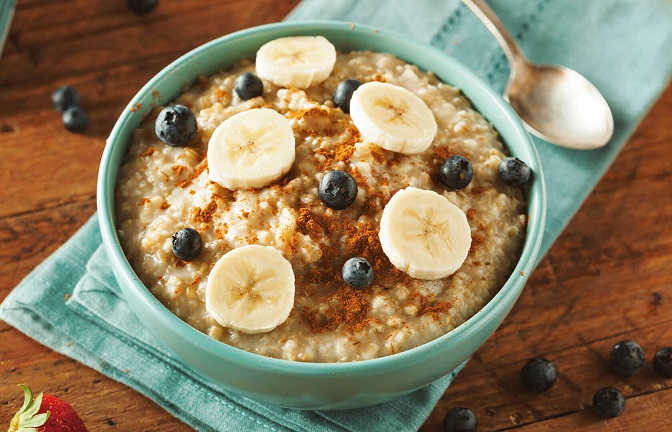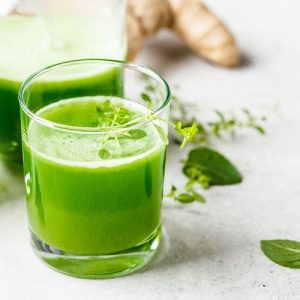Ten seconds. That’s exactly how quickly the stomach begins digesting food after you chew and swallow. Within 45 minutes of eating a meal without fiber, you’ll feel the blood sugar roller coaster effects. A high fiber diet is key to preventing these spikes and falls.
Because a majority of Americans don’t get enough fiber, it’s worth adding fiber to your diet. Following a high fiber diet has countless health benefits, from controlling your blood sugar and cholesterol level to weight loss.
What is fiber?
Many of us associate fiber with digestive health and bowel function. But eating foods high in dietary fiber can do so much more than keep you regular. It can lower your risk for heart disease, stroke, and diabetes, improve the health of your skin, and help you lose weight. It may even help prevent colon cancer.
Fiber, also known as roughage, is the part of plant-based foods (grains, fruits, vegetables, nuts, and beans) that the body can’t break down. It passes through the body undigested, keeping your digestive system clean and healthy.
Fiber comes in two varieties: insoluble and soluble.
Insoluble fiber does not dissolve in water. It is the bulky fiber that helps to prevent constipation, and is found in whole grains, wheat cereals, and vegetables such as carrots, celery, and tomatoes.
Soluble fiber dissolves in water and helps control blood sugar levels and reduce cholesterol. Good sources include barley, oatmeal, beans, nuts, and fruits such as apples, berries, citrus fruits, and pears.
Many foods contain both soluble and insoluble fiber. In general, the more natural and unprocessed the food, the higher it is in fiber. There is no fiber in meat, dairy, or sugar. Refined or “white” foods, such as white bread, white rice, and pastries, have had all or most of their fiber removed.
Here some high fiber foods that are both healthy and satisfying:
1.1. Banana:
Bananas contain a fair amount of fiber and several antioxidants. One banana provides about 112 calories and consists almost exclusively of water and carbs. They hold little protein and no fat and promote regularity and encourage digestive health. One medium banana provides approximately 10% of a person’s fiber needs for a day.

1.2. Apples:
Apples are high in fiber, vitamin C, and various antioxidants. They are also very filling, considering their low calorie count. Studies show that eating apples can have multiple benefits for your health.
Not only do apples taste delicious on their own or when added to dishes, but they come loaded with health benefits. “Apples have been linked to numerous health benefits, including improved gut health and reduced risk of stroke, high blood pressure, diabetes, heart disease, obesity, and some cancers,” says Jessica Levinson, RDN, a culinary nutrition expert in Westchester, New York.

1.3. Green Peas:
Green peas are a popular vegetable. They are also quite nutritious and contain a fair amount of fiber and antioxidants. Green peas are one of the best plant-based sources of protein, which is a major reason why they are so filling, along with their high amount of fiber.
Eating protein increases the levels of certain hormones in your body that reduce appetite. Protein works together with fiber to slow digestion and promote feelings of fullness. Finally, Green Peas are rich in fiber, which benefits digestion by maintaining the flow of waste through your digestive tract and keeping gut bacteria healthy.

1.4. Black Beans:
Black beans are exceptionally high in fiber and plant-based protein, two nutrients that help lower chronic disease. Their protein is highly digestible, with a digestibility of 79%. In fact, black beans are considered an ecologically sustainable protein source compared with animal-based sources.
Black beans’ fiber and antioxidants help lower cholesterol, blood pressure, and blood sugar levels.

1.5. Raspberries:
Raspberries are low in carbs and high in fiber, making them a smart choice for anyone watching their carbs.
The antioxidant content of this plant foods may help prevent a range of health conditions. Vitamins C and E, selenium, beta carotene, lutein, lycopene, and zeaxanthin are all example of antioxidants, and they are all present in raspberries.
The fiber and water content in raspberries can help prevent constipation and maintain a healthy digestive tract. Adequate fiber promotes the regularity of bowel movements, which is crucial for the daily excretion of toxins.

1.6. Oatmeal:
Oatmeal is a heart-healthy, fiber-rich and is considered the best breakfast for longevity.
Oats are commonly eaten for breakfast as oatmeal, which is made by boiling oats in water or milk. Oatmeal is often referred to as porridge. They’re also often included in muffins, granola bars, cookies, and other baked goods. Studies show that oats and oatmeal have many health benefits. These include weight loss, lower blood sugar levels, and a reduced risk of heart disease.

Now let’s discover the health benefits of fiber and a high fiber diet:
2.1. A High Fiber Diet Helps You Feel Full:

“Fiber slows the speed of digestion, which makes you feel full and may help you eat less and stay satisfied longer,” explains Marisa Moore, R.D.N., L.D., a culinary and integrative dietitian. When you feel full after your meal, you’re less likely you reach for a bag of chips or cookies an hour later, adds Krista Linares, R.D.N., who specializes in diabetes management and prevention in the Latino community.
2.2. Eating more Fiber Help You Lose Weight:

Fiber-rich foods not only fill you up faster and keep you satisfied longer, they also prevent your body from absorbing some of the calories in the foods you eat. “Fiber binds with fat and sugar molecules as they travel through your digestive tract, which reduces the number of calories you actually get,” explains Tanya Zuckerbrot, R.D., author of The F-Factor Diet.
Another study found that people who doubled their fiber intake to the recommended amount knocked off between 90 and 130 calories from their daily intake-that’s equal to a 9- to 13-pound weight loss over the course of a year.
3.3. Eating Fiber Lower Cholesterol Level:

Eating fiber, specifically soluble fiber, can lower LDL cholesterol levels. Soluble fiber forms a gel-like substance that is broken down by gut bacteria. It can lower cholesterol levels and help regulate blood sugar levels.
Studies have found that people who eat more fiber have a lower body weight, lower blood pressure and lower cholesterol – which is great for your heart health.
3.4 Eating more Fiber Helps Control High Blood Sugar:

“Fiber promotes good bowel health, lowers the risk of cancer and heart disease, and also controls your blood sugar in a certain way,” explains Amy Kranick, a registered dietitian and certified diabetes educator with the adult diabetes program at Vanderbilt University Medical Center in Nashville, Tenn.
According to an article in Everyday Health magazine, when fiber is digested, your body handles it differently than the way in which refined carbohydrates, such as white flour, are digested. A portion of the fiber simply passes through your digestive system intact. This difference means that eating foods rich in fiber is less likely to cause a spike in high blood sugar.
“Fiber doesn’t require insulin [to digest], so it isn’t counted as part of your carbohydrates,” says Kranick. As a result, when you are reading labels and budgeting daily carbohydrates, you can subtract half the grams of dietary fiber from the total carbohydrate count.




